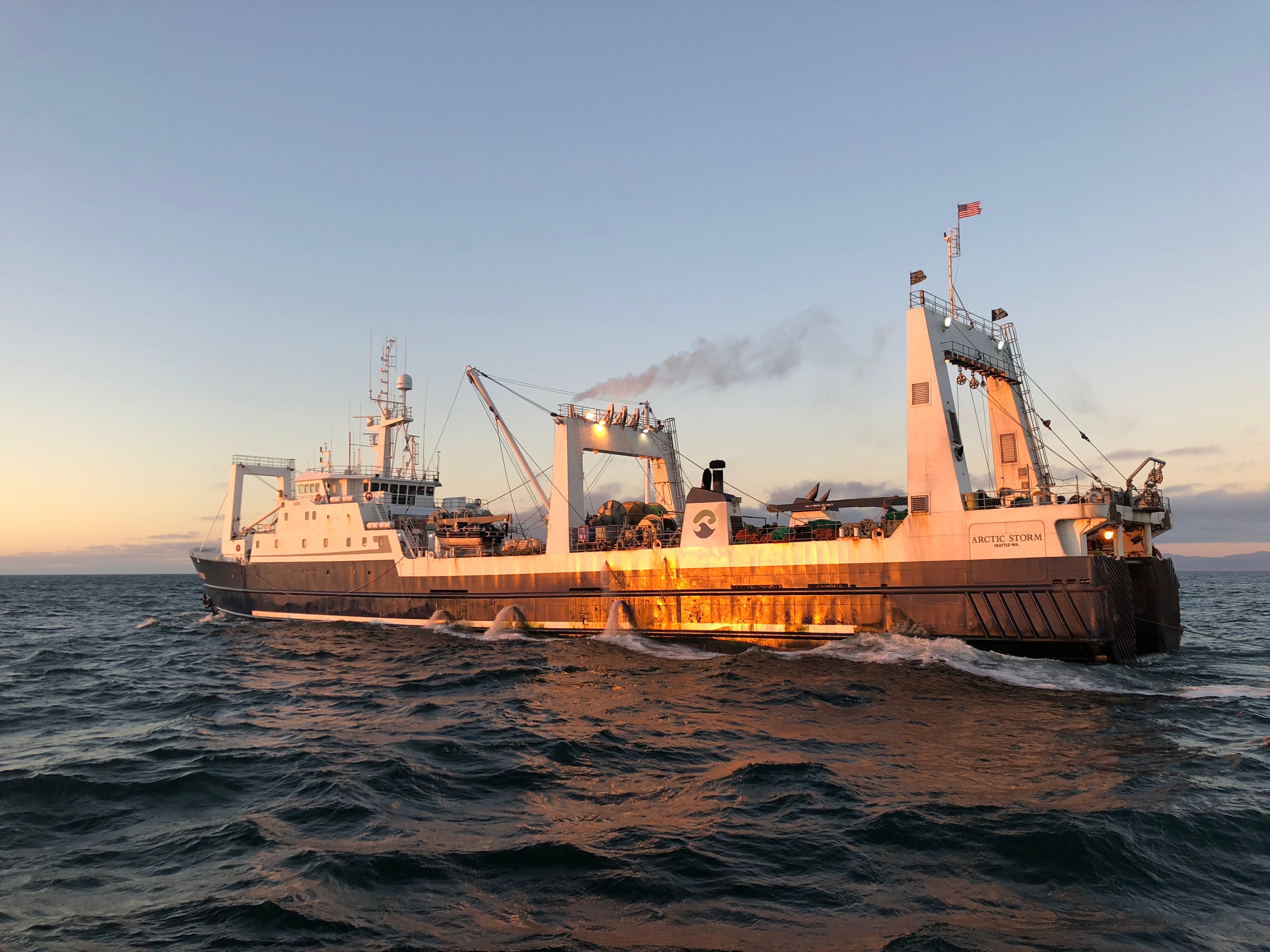Ron Rogness , January 16, 2023
Wild Alaska Pollock 2023 A Season to Kick-Off January 20th

On January 20th, the Alaska pollock fishing fleet will return to the Bering Sea in search of what is estimated to be a record-size biomass and begin the 2023 “A-season.” As you are likely aware, the Total Allowable Catch (TAC) for the Eastern Bering Sea Alaska Pollock was set at 1.3 million metric tons by the North Pacific Fishery Management Council (NPFMC) last month. The TAC is well below the Acceptable Biological Catch (ABC) of 1.91 million metric tons. According to the government biologists that study the biology of the fishery and recommend the ABC to the NPFMC, the majority of the biomass now was spawned in 2018, making them five-year-old fish in the 2023 fishing year. I would note that this year’s class of fish will be the optimal size for processing over the next few years.
What you may not know, however is the history of the NPFMC splitting the catch between the “A” season and “B” season. In his paper entitled, “Fishing for Pollock in a Sea of Change: A Historical and Economic Analysis of the Bering Sea Pollock Fishery,” Dr. Keith Criddle notes what went into the decision to split the season. He notes that in 1990, the NPFMC was looking to prevent waste in the fishery by limiting the amount of Alaska pollock that could be harvested during the spawning season, which typically peaks in February/March. He writes: “the NPFMC decided to look at allocating a portion of the Pollock TAC to the spawning season but decided to delay the vote until December in order to check with the NOAA legal Counsel.
The final decision by the NPFMC allocated the pollock TAC to A and B seasons with up to 40% of the TAC allocated to the A or roe season (January – March) and the remainder to the B season (June – October). This was done with the intent of protecting the pollock during the spawning season, which some thought was important to the sustainability of the stock. Although, there is no clear evidence that fishing at [previous] approved levels have a negative impact on the reproductive capacity even if the fishing were focused on the spawning aggregation.” In a later amendment to the Bering Sea Groundfish Plan, the NPFMC increased the percentage of the TAC that could be harvested in the A season to 45%.
So, the fishing will begin in earnest on or soon after January 20th. In most years, the majority of the A season catch is harvested in close proximity to Dutch Harbor and Akutan.
As noted earlier, this year’s fishery will mostly be of five-year-old fish. According to the biologists, it is at this age where all the fish are sexually mature and will participate in the spawning. Thus, I would expect to see most of the catch near Dutch/Harbor and Akutan where the spawning mostly occurs. While the official apportionments have not been published by the NOAA-fisheries, The A season portion of the non-Community Development Quota (CDQ) TAC will be just over 500,000 mt, with around 250,000 mt harvested by fishermen delivering to Shorebased processors, 10% harvested by vessels delivering to Mothership processors and 40% to catcher-processors. The CDQ A season TAC, which is shared by associations of western Alaska rural native communities, will add an additional 58,500 mt to the A season harvest.
We wish all of the Wild Alaska Pollock fishermen and crew a healthy and safe A season as they work hard to bring the bounty of this sustainable, nutritious protein, Wild Alaska Pollock to consumers in the U.S. and around the world!

